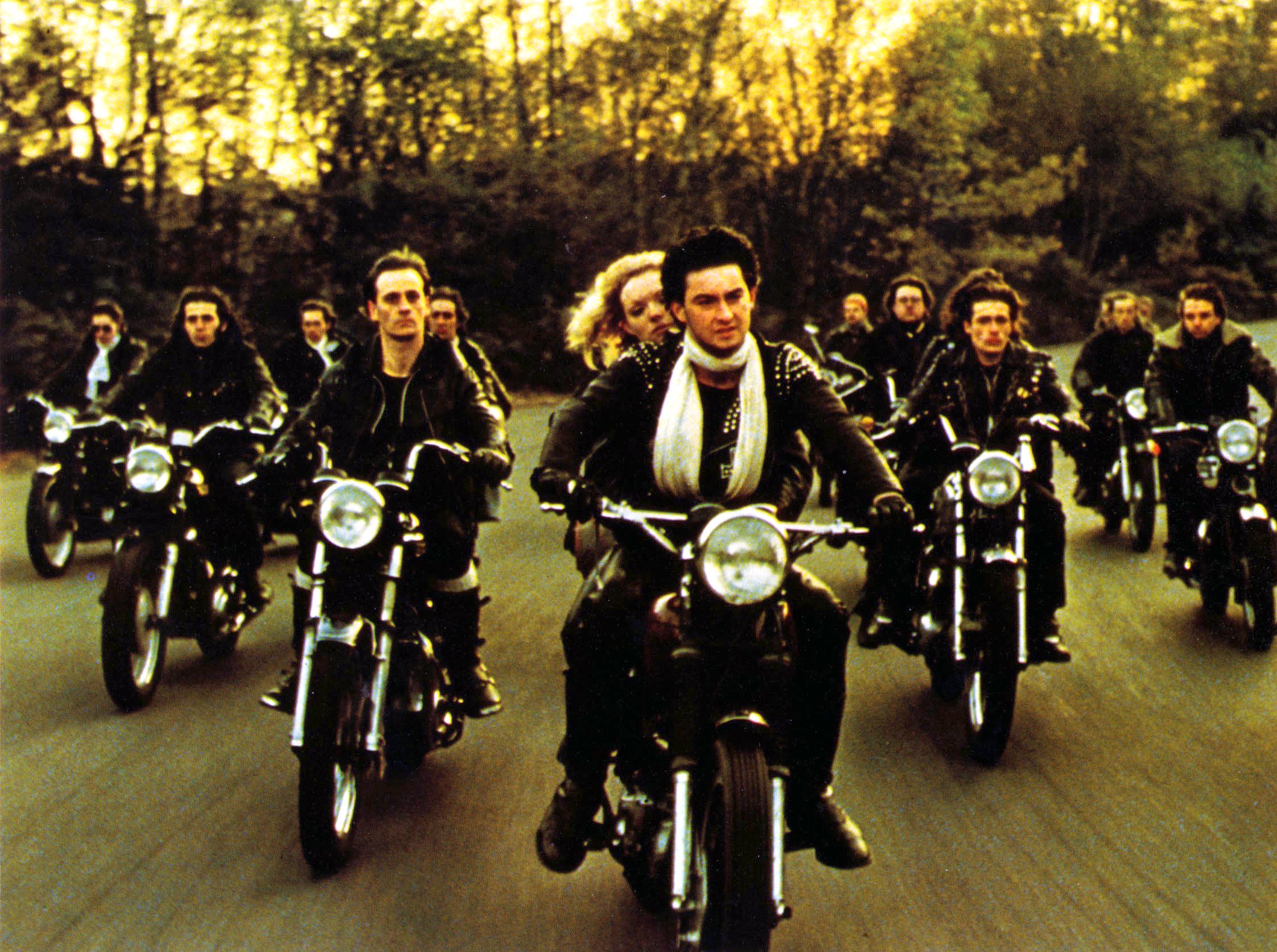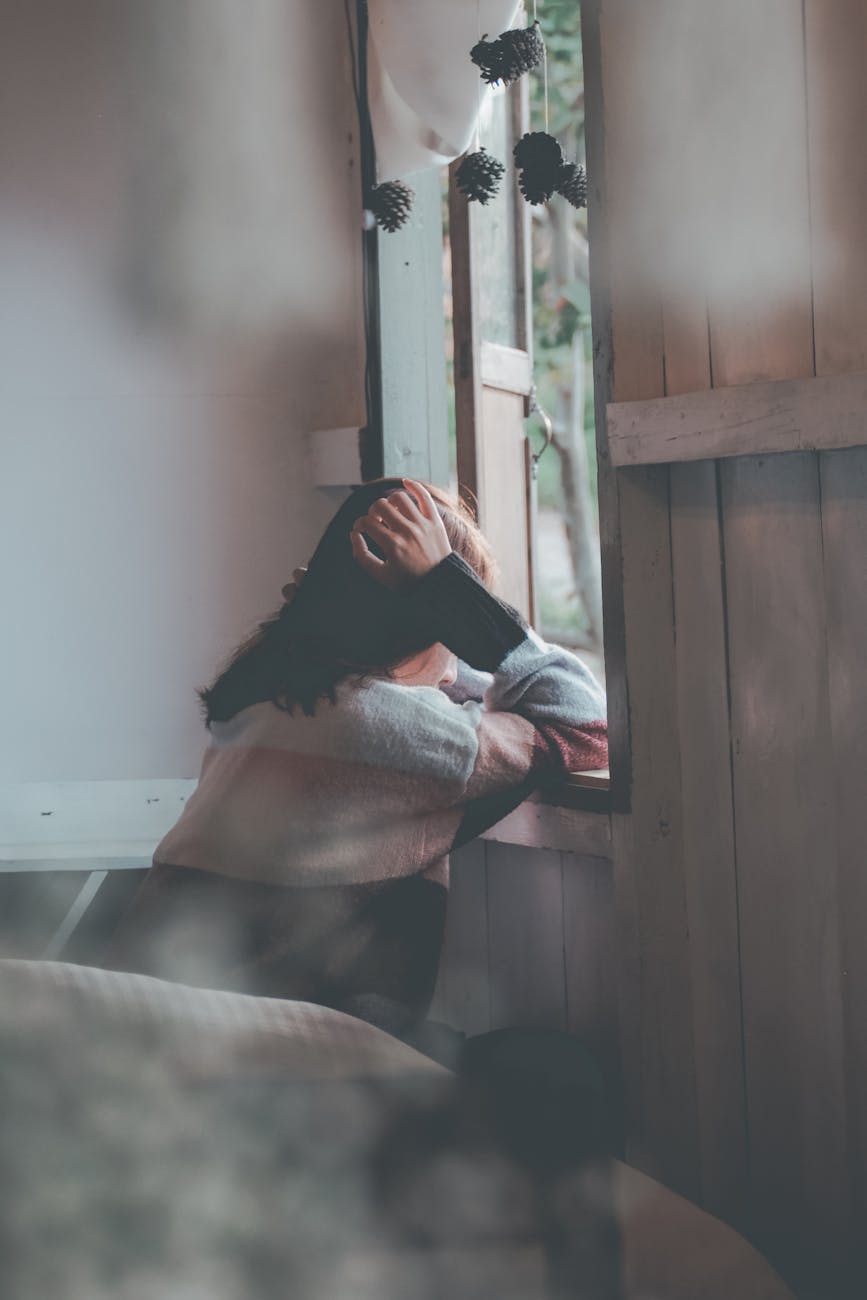Fashion and music have always been a way for people to find a sense of identity within society/to work out who they are away from who they have been told to be, whether that be by their parents, employers, or society at large.
No time has this been truer than in post-Second World War Britain.
With greater freedom and the affluence that came from the conclusion of the war, the baby boomer generation [of people born between 1946 and 1964], sought to find a sense of belonging in being different.
With a desire to differentiate themselves from their parents, and now with the financial means to do so, various subcultures were born during this time, all of which have left a far-reaching mark on the landscape of British music, fashion, and art.
Teddy boys,
Mods vs. Rockers,
Skinheads vs. Hippies,
Punks,
New Romantics,
clothes became something much more than just ‘individual adornment’ to young people of the late twentieth century- they were a matter of deep, tribal identification.

‘Teddy Boys’, as pictured above, were the first real high-profile rebel teenagers, who flaunted their clothes, (Edwardian-style drape jackets, high-waisted, twin-pleated trousers, and silk bow ties) and attitude like a badge against the mainstream.
After teddy boys went relatively ‘out of fashion’, mods and rockers came onto the scene…

Mods & Rockers
Not wanting anything to do with anything that had been before/wanting to entirely forge their own identity away from the dreariness of Britain, instead of looking to previous British styles of dress, as teddy boys did, mods looked to Italy and France for clothes, to black America for records, and to the Caribbean for attitude, in order to create something completely new that would be ‘universally cool.’
Characterised by their love of scooters and their taste for Italian-inspired tailored fashion- mods wore suits and ‘clean-cut’ outfits (think button-down white shirts, Levi jeans, trendy puppy shoes, and parka coats).
We like to assert ourselves and be in the limelight, so we wear clothes that make us stand out. We don’t mind if people think we look weird, as long as we are noticed.
In opposition with mods were ‘rockers’, many of whom were the younger siblings of the 1950s Edwardian/’Teddy Boys.’
Whereas mods were into modern jazz and black American music, like Ska, Northern Soul, and Motown, rockers preferred rockabilly and rock ‘n roll music.

While the British press frequently reported on the conflict that occurred between the different subcultures, (mods & rockers, for example), by pouncing on any sign of conflict, it has since been confirmed that much of the media coverage was, in fact, fabricated- exaggerated as a way to sell more papers.
They’re wrong un’s, hooligans. They will be the fall of British society.

Fear-mongering, trying to quash all individuality, the media were quick to report on the minority of people who misappropriated skinhead culture, far-right ‘neo-nazis’ essentially, yet failed to report on any of the good aspects which far outweighed the bad…
The media, time and time again, prove to make people who dare to go against the mainstream the scapegoat for all of society’s woes, because ‘difference’ threatens the system, where only blind conformity can let oppression continue…
It’s why homophobia, misogyny, and racism exist, because people who are ‘different’ pose a threat to the existing ways that things are done, and thus ‘difference’ isn’t something to celebrate in the eyes of people in power, but something to condemn, to punish.

Yes, it’s true that violence did break out in the form of riots between mods and rockers in the 60s, and yes, it’s true that some (a tiny minority) of people did use ‘subculture’ to excuse racism, but it’s also true (yet never reported on), that there was far more peace and a sense of mutual understanding amongst the movements than there was conflict…
As much of Britain kept itself distant from the immigrants the skinheads embraced Jamaican style and music. We would attend all night Blues parties together and many young Blacks were skinheads themselves. Remember the [Jamaican] migrants were relatively poor and so the working-class kids had more in common with them than with the middle and upper classes of Britain. We lived on the same streets, went to the same schools, and we partied together. While much of Britain saw the migrants as ‘those black people,’ we skinheads saw them as ‘our black mates.’ Of course, there were skinheads with racist attitudes, but most skinheads had black mates and most skinhead gangs had black kids amongst their ranks. […]
Skinhead would not exist without Jamaica.
Like suggesting that all Muslims are terrorists, or that all men are rapists, you can’t brandish a whole demographic for the actions of a tiny minority.
Whether a mod or a rocker, a hippie or a skinhead, despite their differences, every subculture was simply a part of a generation searching for a sense of identity and belonging, with a shared love of music, fashion, and style.

A rocker, upon being asked what he thought of mods once said:
They’re all right. I have nothing against them. As long as they mind their own business, I’ll mind mine. I think their clothes are a bit soppy, almost girlish, but if they like that sort of gear, good luck to them.
Now, I don’t know about you, but the quote above isn’t screaming ‘violent mob’ to me…
By the late 1960s, mods and rockers had almost entirely faded from public view and media attention turned to two new emerging youth subcultures as the mods began to split into two camps.

Skinheads & Hippies
The more middle-class mods became hippies (pictured above), and involved themselves very much in the psychedelic culture, gravitating towards pop art and psychedelia, and embracing the sexual revolution of the ‘swinging sixties’, while the working-class end who took a more ‘rough and ready’ approach to being a mod, joined up with Jamaican Rude Boys and became skinheads.
Skinhead fashion, in total opposition to the bohemian ‘flower power’ style of the hippies, was working class and no fuss, and their short hair (as in the name, ‘skinhead’), served as an act of rebellion against the middle-class hippie culture.

(Think Fred Perry shirts, Harrington jackets, braces, and Dr. Martens. The ‘uniform of the non-uniform’).

Punk
With the rise to power of divisive conservative politician Margaret Thatcher in the late 70s, and with that, the rise in unemployment and mass striking across the country, punk burst onto the scene as a ‘fuck you’ to the system…
This era was a crucible of creativity and rebellion, birthing a subculture that challenged societal norms and redefined fashion as an expression of defiance and individuality.
A highly political subculture, punk was all about worshipping outrage and rebellion, for which punk-inspired bands often made political statements through their music (just consider the sex pistols, ‘Anarchy in the U.K’, for an example of this).
Loud, brash, and anti-establishment, punks delighted in the visual violence of their clothing.
If I were to label myself as belonging to a subculture, then I would say that ‘punk’ sums me up. I’m gender non-conforming in terms of fashion, with this having political undertones in line with the ‘fuck you’ nature of the punk movement.
I am a woman, for which you tell me that I should look a certain way, for which I tell you:
Fuck off.

New Romanticism
An ‘offshoot’ of punk arose in the early 80s to be known as ‘New Romanticism.’ New romanticism took the ‘bold’ and ‘intimidating’ looking aspects of punk fashion and combined them with a coming-of-age queer revolution.
New Romanticism: All the preceding subcultures of post-war Britain with an added level of exaggeration, spectacle, and frivolity, where masculine and feminine, camp, and punk, are combined.
Closely linked to the British club scene, ‘New Romantics’ drew inspiration from the flamboyance and androgyny of 1970s Bowie and glam rock (the lyrics to ‘Rebel Rebel’ may as well be an instructional manual for the New Romantic, ‘Not sure if you’re a boy or a girl’), and were unashamedly glamorous in their appearance.
Dressing up to outrageous levels, their theatrical hair and makeup soundtracked by synth-driven pop music, new romantics largely defied gender conventions whereby, in playing dress up as a form of resistance, gender fluidity was the norm.

Why don’t we have subcultures today?
Where fast fashion is everywhere, where pop music all largely sounds the same, (autotuned), where people are all trying to look the same to get the most ‘likes’ on social media, especially girls and women who have the added pressure of trying to appease the male gaze, there is little room these days for individuality.
For the alternative people who do still exist, (if you can pass the swarm of youth adorned with counterfeit Gucci tracksuits on your local high street you might catch a glimpse), social media has largely pushed out any need for subcultures.
Unlike in the late 20th century when subcultures were the only identifiers of a person’s personality, a leather jacket the sign of a rocker, a smartly tailored blazer the sign of a mod, quiffs, eyeliner and frilly shirts New Romantic; Mohawks and safety pins Punk, today we don’t have to see physical evidence to find our ‘tribe’, we can just read Instagram bio’s and look at Spotify playlists, letting the algorithm dictate our tribe (/our lives)…
With social media also comes online stores and the hellscape that is fast fashion.
Punk and alternative subcultures have been packaged and commodified for mass consumption by fast fashion retailers, therefore defeating the purpose of ‘alternative’ subcultures entirely…
It’s become more about aesthetics and less about values.
If you’re buying hippie clothes from Shein, for example, then all the values of the hippie subculture are being disregarded in buying from a company that is damaging the environment.
Furthermore, with diversity now being celebrated, and how we define our gender and sexuality being more fluid, many people are rejecting labels, not necessarily wanting to put themselves in a box anymore/not wanting to strictly align with one subculture as they did in the past…
Because subcultures have essentially become ‘fashion trends’ as opposed to lifestyles as they were once considered, young people today tend to draw inspiration from a variety of influences instead of just one.
It’s as easy as swapping Doc Martens for loafers to ‘make the switch’ these days.
It is important to note, however, that just because no new subcultures have arisen in recent years, it doesn’t mean that they don’t exist.
As this article has hopefully shed some light on, Britain is steeped in rich history when it comes to counter-culturalism and its associations with class. One only has to consider the likes of ‘This is England’ to see it for yourself…

With the understanding of different subcultures, we can see their influence on people today.
Amy Winehouse for example, made Fred Perry polo’s her staple, and of course, her famous beehive haircut which was, as we can now see, a nod to the mod culture of the 60s.

Noel Gallagher of Oasis (pictured below), Alex Turner of The Arctic Monkeys, if we look around, we can see the influence of the subcultures of the late 20th century on so many artists of the 21st century.

It doesn’t matter that Fred Perry polos, Doc Martens, and trench coats were in fashion over six decades ago because, as people routinely describe Northern Soul as not just being about the music but a ‘way of life’, the same is true of all the subcultures that I have written about today.
Teddy boys,
Mods,
Rockers,
Skinheads,
Hippies,
Punks,
New Romantics
it’s not just about clothes or music, it’s about values and the sense of belonging that you get in being able to create an identity that is not dictated for you, but that is decided by you/constructed for yourself.
Something that cannot go ‘out of fashion’, where trends come and go, values tend to last a lifetime, hence why the influence of subcultures is just as prevalent today (albeit more covert), as it was 70 years ago, when ‘teddy boys’ arose from the disused air raid shelters of WW2 (not really, they arose from their rock n roll poster-adorned bedrooms, but it’s a cool sentiment to end with, isn’t it).
*(More ‘covert’ today because the need for distinct subcultures is lessened when we are all leaning into the same universal value system:
To treat each other and the world with love and kindness).

From the dreariness of a depressed Britain on the verge of collapse, in the first wave from Hitler in the world war, and then in the second, from Margaret Thatcher, there came a generation (passed on to generation, passed on to generation, passed on to us) of young people who were determined to forge their own futures…
Promoting ‘counter-culturalism’ as a political statement:
Showing the workings of your life and mind in how you dress.
Looking for the light in the darkness,
for the diamond in the rubble,
the hope in the hopeless,
this is what it means to be ‘counter-cultural’,
to never stop searching for hope.And if you can’t find it?
Then you just create it yourself.
Relying on no one,
finding yourself,
this is what it means to be ‘counter-cultural’,
to never…
stop searching…
for hope…




Leave a Reply